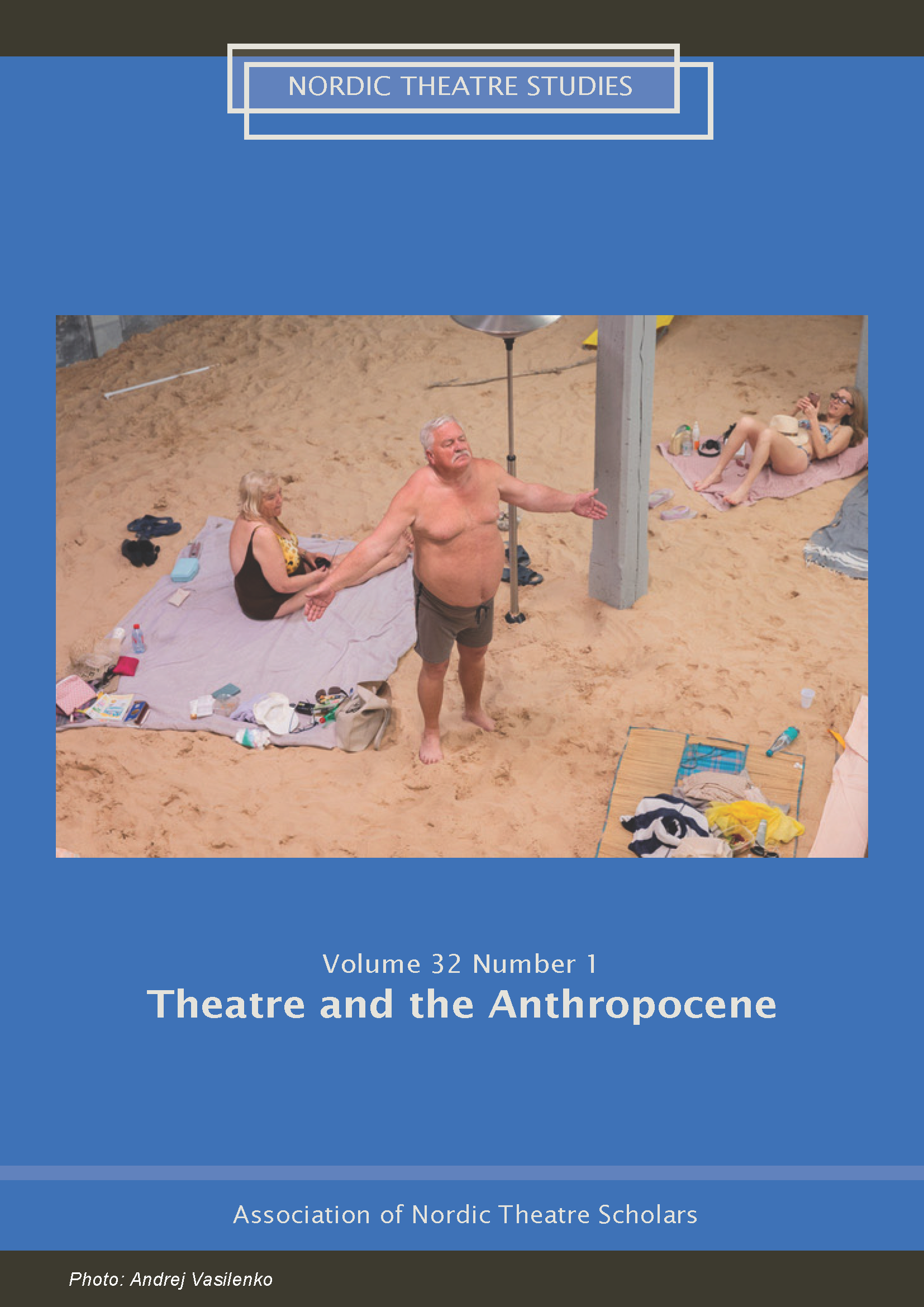Para-Anthropo(s)cene Aesthetics Between Despair and Beauty
A Matter of Response-Ability
DOI:
https://doi.org/10.7146/nts.v32i1.120407Keywords:
Anthropocene, Climate change, Aesthetics, Performativity, Dystopia, UtopiaAbstract
The Anthropocene is gaining recognition as an epoch in Earth’s history in which mankind is changing the environment and the biosphere (Steffen et.al. 2011). Hotel Pro Forma’s visual opera NeoArctic (2016) and Yggdrasil Dance’s dance meditation Siku Aapoq/ Melting Ice (2015) explore how to aesthetically shape the ecological impact on human existence. The article discusses the performances’ impact on potential responses to the climate crisis.
In NeoArctic, human activities have caused “overflow feedback”: a constant flow of digital vistas of pollution, raging weather, temperature rises alternate with the planet’s eternal processes, while underscored by ambience and operatic electro-pop. The images are front-projected onto the stage backdrop to create a literal overflow of the steadfast choir-performers, in which they almost disappear or become ghostly shadows, implying their imminent demise or insignificance on a planetary scale.
Siku Aapoq engages with Greenland’s melting icecap: two dancers, Norwegian and Inuit, interact with a fabric understood as the melting ice, while enveloped in evocative lights, the crackling of glaciers, Inuit chants, ambience, and jazz. The Norwegian and the Inuit take turns enacting the ice, suggesting the interconnectedness with nature of both cultures.
Both performances seem to invite acceptance of inevitable disaster. Yet, human prevalence is implied in the stagings by convergence of past and future in the present, which suggests that the future is still undecided, and survival depends on an ability to respond to the materiality of the environment that we are already entangled in through a profound sense of beauty.
Theoretically, the analyses mainly draw on agential realism (Karen Barad) in order to outline a “para-Anthropo(s)cene aesthetics” that may reach beyond the human and engage spectators in realizing their ethical entanglement and the call for climate action. Considering intentions and reception, and the dystopian nature of the performances, the responses to climate change that the aesthetics may instigate are discussed.
Downloads
Published
How to Cite
Issue
Section
License
The copyright belongs to the authors and Nordic Theatre Studies. Users can use, reuse and build upon the material published in the journal but only for non-commercial purposes. Users are allowed to link to the files, download the files, distribute the files on a local network (preferably by links), upload the files to local repositories if their institutions require them to do so, but not republish the files without proper agreements with the journal and the author.

